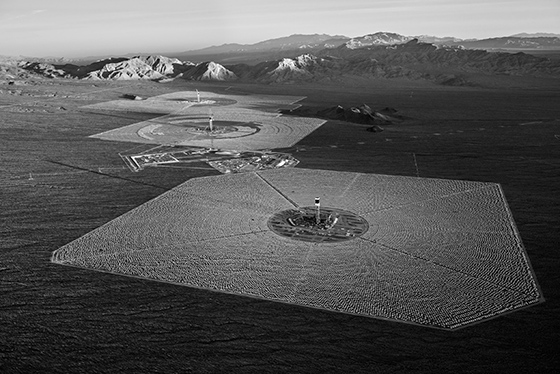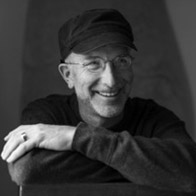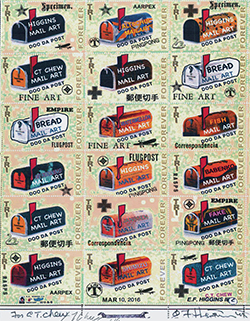Dishman Art Museum hosts photography by Jamey Stillings and Interactive Mail Art Exhibitions

The Dishman Art Museum on the campus of Lamar University will host an opening reception on Friday, Sept. 30, from 6:30 to 8:30 p.m., for two exhibitions: Jamey Stillings: The Evolution of Ivanpah Solar; and The Great Exchange: Interactive Mail Art. Both shows will be on display through Nov. 20.
In The Evolution of Ivanpah Solar, photographer Jamey Stillings creates a powerful series of striking black-and-white aerial photographs of the world's largest concentrated solar power plant, the Ivanpah Solar Electric Generating System in the Mojave Desert of California. Shot from a helicopter during first and last light, Stillings' black-and-white images intrigue with tight abstractions, oblique views of geologic and geometric forms and broad, open views of the dramatic desert basin.
 Stillings' exhibition is presented in cooperation with the Lamar University Office of Sustainability and the LU Green Squad. They will also host a lecture with Stillings at 6 p.m., Friday, Sept. 30, in the Dishman Art Museum Lecture Hall, immediately preceding the opening reception. An award-winning photographer, Stillings has a passionate interest in people, world cultures and the social and environmental issues that are guiding forces in his art and life. Hear him talk about his amazing photography career and his current exhibition at the Dishman Art Museum.
Stillings' exhibition is presented in cooperation with the Lamar University Office of Sustainability and the LU Green Squad. They will also host a lecture with Stillings at 6 p.m., Friday, Sept. 30, in the Dishman Art Museum Lecture Hall, immediately preceding the opening reception. An award-winning photographer, Stillings has a passionate interest in people, world cultures and the social and environmental issues that are guiding forces in his art and life. Hear him talk about his amazing photography career and his current exhibition at the Dishman Art Museum.
"This is incredible photography," said Dennis Kiel, director of the Dishman Art Museum. "It makes people think more about the environment and what we can do in a positive way to effect change. We are honored to have him speak at the opening reception because he is a fascinating photographer and this is such an important project that everyone should see and know about."
 The Great Exchange: Interactive Mail Art explores this populist artistic movement centered on sending small-scale works through the postal service. It initially developed in the 1950s and 1960s, and has since evolved into a global movement that continues to the present. The American artist Ray Johnson is considered the first mail artist. Media commonly used in mail art include postcards, paper, a collage of found or recycled images and objects, rubber stamps and paint.
The Great Exchange: Interactive Mail Art explores this populist artistic movement centered on sending small-scale works through the postal service. It initially developed in the 1950s and 1960s, and has since evolved into a global movement that continues to the present. The American artist Ray Johnson is considered the first mail artist. Media commonly used in mail art include postcards, paper, a collage of found or recycled images and objects, rubber stamps and paint.
“What I find exciting about mail art is that it is a way to form a friendship with someone I might not have otherwise met, and each time that I reply to them is a way to challenge myself creatively," said Alyssabeth Guerra, museum assistant and guest curator for the show. "Getting something fun and colorful in my mail box can make my whole day brighter. Not to mention, my home studio's walls are now decorated with some really interesting work from people who are doing great things. The worth of these pieces is in their meaningfulness and the fact that they were made with our personal conversation in mind.”
Another fun part of the exhibition is that it is interactive. In the center of the gallery, a work station is set up with materials for visitors to design their own mail art post cards. They may create responses to the artists in the show (all of the artists' addresses are posted next to their work), or perhaps send their post cards to a friend or family member. They then drop the cards into a U.S. postal dropbox located at the entrance of the museum.
The Dishman Art Museum is open from 10 a.m. to 5 p.m., Monday through Friday.
Admission to the exhibition and reception on Friday, Sept. 30, is free. The LU Clarinet Trio will perform at the reception, and Katharine & Company will provide refreshments.
For more information, call (409) 880-8959.


